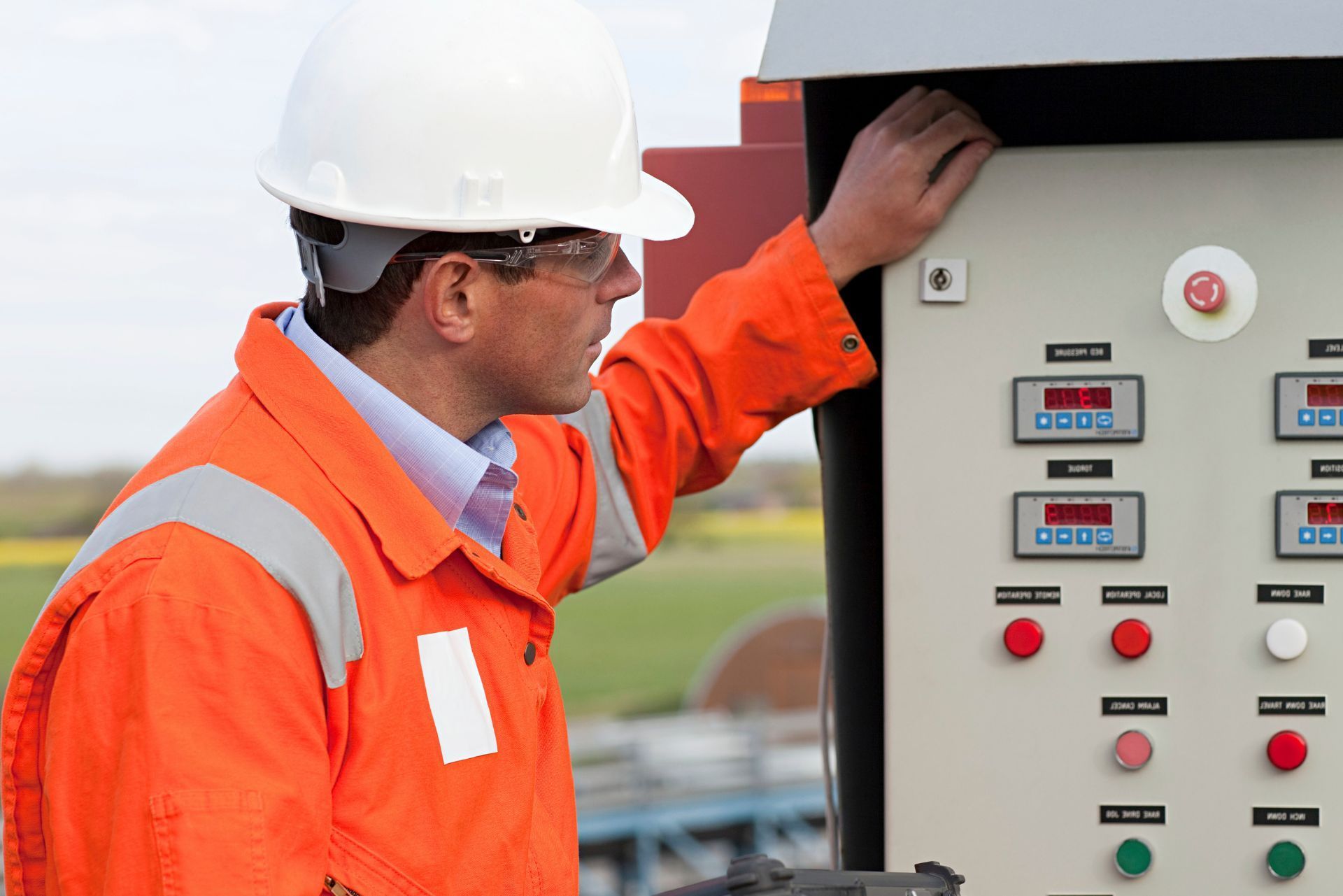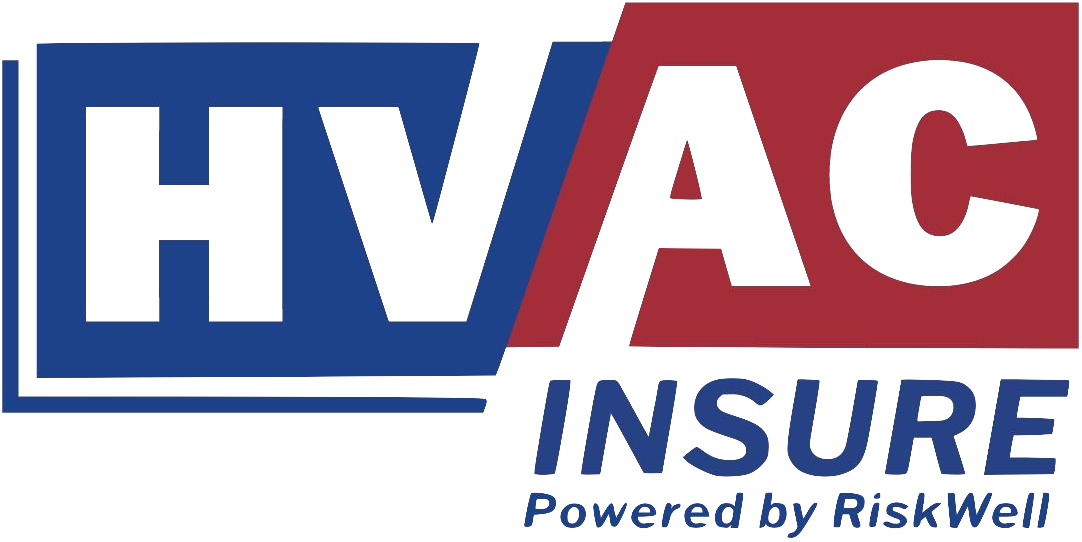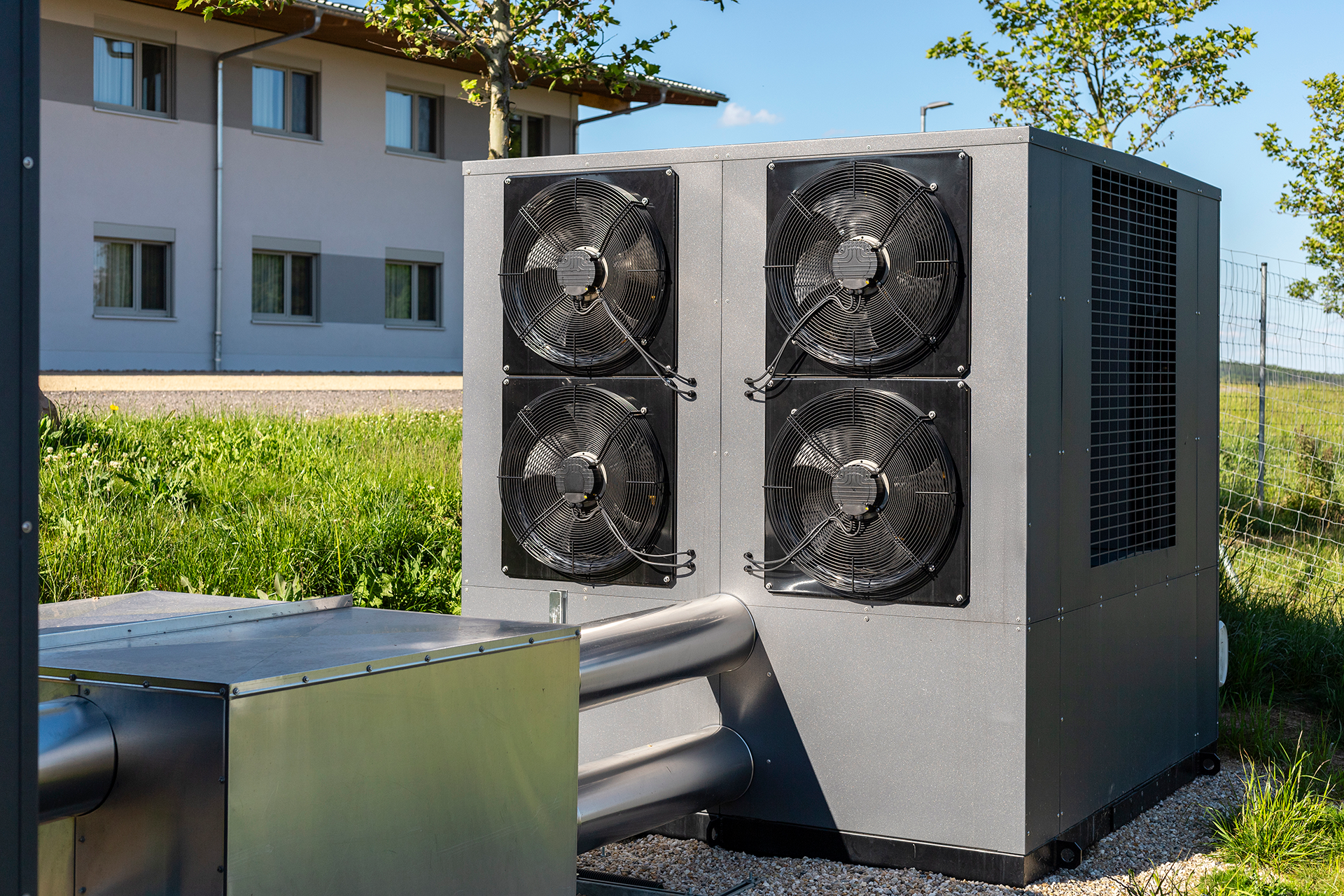When commissioning and TAB (Testing, Adjusting, and Balancing) contractors step onto a job site, they bring specialized skills that ensure HVAC and water systems perform exactly as designed. But with this expertise comes unique risks that standard insurance policies might not cover. Understanding the nuances of insurance tailored for commissioning and TAB contractors is essential for protecting your business, your team, and your clients.
Commissioning agents play a crucial role in optimizing building performance. As Karl Stum from Portland Energy Conservation, Inc. (PECI) explains, "TAB is the setup and adjustment of air and water flows in the HVAC system," a process that directly impacts system efficiency and occupant comfort. Given the technical nature of this work, insurance coverage needs to reflect the specific risks involved. To grasp why, it helps to look at the broader construction insurance landscape, which is expected to reach $18.9 billion by 2025 with steady growth annually, signaling the increasing complexity and demand for specialized coverage according to market projections.
Why Commissioning and TAB Contractors Face Unique Insurance Challenges
Commissioning and TAB contractors operate at the intersection of design, construction, and operations. Their work ensures that HVAC systems, plumbing, and other mechanical components meet performance standards before a building is handed over. This responsibility means any errors or oversights can lead to costly rework or performance issues down the line. The complexity of these systems necessitates a high level of expertise, as well as a thorough understanding of the latest technologies and regulations. As buildings become more energy-efficient and technologically advanced, the role of commissioning agents becomes even more critical, requiring them to stay updated on evolving industry standards and practices.
Unlike general contractors, commissioning agents are often involved early in the project. Karl Stum highlights the advantage of this early involvement: it allows commissioning agents to collaborate closely with designers, reducing conflicts and minimizing problems during construction. However, this also means their insurance must cover not only physical risks but also professional liabilities related to design review and system performance as noted by PECI. This proactive approach can lead to significant cost savings and improved building performance, but it also places a greater responsibility on the commissioning agents to ensure that all systems are functioning as intended before occupancy.
Moreover, the construction industry remains one of the most hazardous sectors. The U.S. Bureau of Labor Statistics reported 1,008 fatal work injuries in construction in 2020, the highest among all industries. While commissioning and TAB contractors may not face the same physical dangers as heavy construction crews, their work environments still carry risks that insurance must address according to labor statistics. For instance, commissioning agents often work in occupied buildings, where they must navigate around existing tenants and equipment, increasing the likelihood of accidents or property damage. Additionally, the need to work in confined spaces or on elevated platforms can introduce further safety concerns that must be mitigated through comprehensive insurance coverage.
Types of Risks Specific to Commissioning and TAB Work
Commissioning contractors face several risk categories that influence insurance needs:
- Professional Liability: Errors in testing or balancing can cause system inefficiencies or failures, leading to client claims. This risk is heightened in projects where performance metrics are tightly defined, as even minor deviations can result in significant financial repercussions.
- General Liability: Physical damage to client property or injury to third parties during site visits. The dynamic nature of construction sites means that commissioning agents must be vigilant and prepared for unexpected situations that could lead to accidents.
- Equipment Coverage: Specialized tools and instruments used in TAB require protection against loss or damage. These tools are often expensive and critical for ensuring accurate measurements and assessments, making their coverage essential for uninterrupted operations.
- Workers Compensation: Even though the work may seem less physically intensive, onsite hazards still exist. Commissioning agents may encounter various risks, including slips, trips, and falls, particularly in environments where construction is ongoing and pathways are not clearly defined.
In addition to these risks, commissioning and TAB contractors must also consider the implications of emerging technologies and sustainability practices. As the industry shifts towards smart buildings and integrated systems, the complexity of their work increases, necessitating a more nuanced understanding of both the technology and the associated risks. This evolution may require contractors to seek specialized insurance products that address new liabilities, such as cyber risks related to building automation systems or environmental liabilities stemming from the use of sustainable materials and practices. As such, staying informed about industry trends and potential exposures is crucial for commissioning agents to effectively manage their insurance needs.
HVACInsure is fully licensed and permitted to sell contractor and commercial insurance in Texas.
We proudly serve clients throughout Texas and maintain partnerships with local Texas insurance carriers to ensure HVAC professionals receive compliant, affordable, and comprehensive coverage that meets project and regulatory requirements.
How Commissioning Reduces Construction Costs and Why Insurance Matters
Investing in commissioning pays off beyond system performance. A meta-analysis found that commissioning costs average about $1.00 per square foot, representing just 0.6% of total construction costs. The median payback time for this investment is under five years, thanks to fewer change orders, reduced callbacks, and overall cost savings during construction according to recent studies.
The California Commissioning Guide highlights that commissioning can reduce change orders by 87% and contractor callbacks by 90%. This translates to a 4% to 9% reduction in total construction costs. These figures underscore why commissioning contractors are vital to project success and why their insurance needs to cover the full scope of their work, including potential claims related to cost overruns or project delays.
Insurance policies tailored for commissioning and TAB contractors often include coverage for professional errors that could otherwise lead to expensive disputes. Without this protection, a single mistake in system balancing could result in costly litigation or repair bills that jeopardize the contractor’s financial stability. Moreover, the evolving complexity of building systems, including advanced HVAC technologies and energy-efficient designs, necessitates a robust understanding of system integration, further emphasizing the importance of commissioning in mitigating risks associated with these sophisticated installations.
Insurance Coverage Options for Commissioning and TAB Contractors
Several insurance products are essential for these contractors:
- Professional Liability Insurance: Covers claims of negligence, errors, or omissions in the commissioning process.
- General Liability Insurance: Protects against bodily injury or property damage claims arising from onsite activities.
- Workers Compensation Insurance: Mandatory in most states, it covers employee injuries sustained during work.
- Equipment Insurance: Covers tools and specialized instruments used during testing and balancing.
Choosing the right combination depends on the size of the business, the scope of projects, and client requirements. Some contractors also opt for additional coverages like cyber liability if they handle sensitive building data or contracts that require specific insurance endorsements. Furthermore, as the construction industry increasingly embraces digital solutions and smart technologies, the risk landscape is evolving. Contractors may need to consider coverage options that address potential cybersecurity threats, including data breaches or system failures that could disrupt building operations or compromise client information.
Additionally, the role of commissioning in achieving sustainability goals cannot be overstated. As more projects aim for LEED certification or other green building standards, commissioning becomes crucial in ensuring that systems operate as intended to meet energy efficiency benchmarks. This not only enhances the building's performance but also increases its marketability and value. Consequently, contractors must remain vigilant about their insurance coverage, as the stakes are higher when dealing with environmentally sensitive projects that may be subject to stricter regulations and scrutiny.

Natural Disasters and Construction Insurance: What Commissioning Contractors Should Know
Natural catastrophes have become a significant factor in the construction insurance market. In 2023, global insured losses from natural disasters hit an estimated $123 billion, marking the fourth year in a row with losses exceeding $100 billion according to industry reports. While commissioning contractors may not be directly involved in large-scale construction, their work often takes place on active sites vulnerable to weather events. The increasing frequency and intensity of these disasters, fueled by climate change, have made it imperative for contractors to stay informed about potential risks and the insurance products available to mitigate them.
Insurance policies for commissioning and TAB contractors should consider coverage for delays and damages caused by natural disasters. This is especially important in regions prone to hurricanes, floods, or wildfires. Contractors may face project interruptions or equipment losses that standard policies might not fully cover. For instance, a sudden flood can not only damage machinery but also lead to significant delays in project timelines, resulting in financial repercussions that could extend beyond the immediate loss. It is crucial for contractors to work closely with insurance brokers to tailor their policies, ensuring they include provisions for business interruption and extra expenses that arise from such unforeseen events.
Understanding the broader construction insurance market trends can help commissioning contractors negotiate better terms and ensure their policies address these growing risks. The market’s projected growth to nearly $19 billion by 2025 reflects increasing demand for specialized coverages that adapt to evolving threats and construction practices as market analysis shows. Additionally, as technology continues to advance, many insurers are incorporating data analytics and predictive modeling to assess risks more accurately. This shift not only enhances the underwriting process but also allows contractors to better understand their exposure to natural disasters, enabling them to make informed decisions about their insurance needs and risk management strategies.
Furthermore, the integration of sustainability practices in construction is becoming increasingly relevant in the context of natural disasters. Many commissioning contractors are now exploring how green building techniques can not only reduce environmental impact but also enhance resilience against extreme weather. For example, utilizing materials that withstand high winds or implementing drainage systems that mitigate flooding can lead to safer construction sites. As these practices gain traction, contractors may find that insurers are more willing to offer favorable terms for projects that prioritize sustainability, recognizing the long-term benefits of reduced risk exposure.
Best Practices for Commissioning Contractors to Manage Insurance Risks
Managing insurance risks starts with clear communication and proactive planning. Commissioning contractors should engage insurance professionals familiar with the construction sector to tailor policies that fit their unique work profile.
Early involvement in projects, as Karl Stum advises, not only improves building outcomes but also reduces insurance claims by avoiding costly mistakes. Collaborating with designers and contractors from the start helps identify potential risks and ensures that insurance coverage aligns with project demands.
Maintaining detailed documentation of testing procedures, adjustments, and communications can also protect contractors in case of disputes. Insurance providers often look favorably on businesses that demonstrate strong risk management practices.
How to Choose the Right Insurance Provider
Look for insurers who understand the commissioning and TAB niche within construction. Providers with experience in this area can offer tailored policies and advice on risk mitigation. It’s also wise to review policy limits, exclusions, and endorsements carefully to avoid surprises.
Regularly updating insurance coverage as the business grows or takes on different types of projects ensures ongoing protection. For example, expanding into commissioning for renewable energy systems or smart buildings may require additional endorsements or new types of coverage.

Insurance Comparison: Commissioning Contractors vs. General Construction Contractors
| Coverage Type | Commissioning & TAB Contractors | General Construction Contractors |
|---|---|---|
| Professional Liability | Essential for errors in system testing and balancing | Less common unless design services are offered |
| General Liability | Protects against property damage and bodily injury on site | Critical due to higher physical risk on construction sites |
| Workers Compensation | Required, covers injuries during commissioning activities | Mandatory, covers a wide range of on-site injuries |
| Equipment Coverage | Important for specialized TAB instruments and tools | Covers heavy machinery and general tools |
| Delay & Natural Disaster Coverage | Recommended due to project interruptions | Often included or available as add-ons |
The building automation market is expected to grow even further, reaching around USD 197.5 billion by 2032, with a CAGR of about 11.2% from 2023 to 2032. This expansion will bring more sophisticated systems and higher stakes for contractors. Custom Market Insights details this long-term growth.
One notable trend is the increasing use of AI-powered collaborative robots, or cobots, in construction and automation projects. A nationwide survey of 600 architecture, engineering, and construction professionals found safety and reliability are key factors driving cobot adoption. These technologies can reduce human error and improve efficiency but also require updated risk assessments and insurance coverage adjustments. The study sheds light on how AI integration is reshaping contractor risk profiles.
Cybersecurity will remain a top priority. Platforms like Honeywell Connected Solutions demonstrate how AI and IoT integration demand proactive cyber risk management. Insurers are responding with tailored policies that combine traditional liability with cyber protection.
Frequently Asked Questions
Q: Do commissioning and TAB contractors need professional liability insurance?
A: Yes. This coverage protects against claims related to errors or omissions in testing and balancing work.
Q: How much does commissioning typically cost compared to total construction expenses?
A: Commissioning costs average about $1.00 per square foot, roughly 0.6% of total construction costs, with a payback period under five years.
Q: Can natural disasters affect commissioning projects?
A: Absolutely. Delays and equipment damage from natural catastrophes are risks that should be covered by insurance.
Q: Is workers compensation insurance necessary for commissioning contractors?
A: Yes. Even though the work may seem less hazardous, injuries can still occur on site.
Q: How can early involvement in projects reduce insurance claims?
Early collaboration with designers helps identify and solve problems before they escalate, reducing the likelihood of costly claims.
Insurance for commissioning and TAB contractors requires a thoughtful approach that balances the technical nature of the work with the physical and financial risks involved. By understanding these unique challenges and securing tailored coverage, contractors can safeguard their businesses and contribute to smoother, more efficient construction projects.

About The Author: James Jenkins
I’m James Jenkins, Founder and CEO of HVACInsure. I work with HVAC contractors and related trades to simplify insurance and make coverage easier to understand. Every day, I help business owners secure reliable protection, issue certificates quickly, and stay compliant so their teams can keep working safely and confidently.
Coverage for Crews, Vehicles, and Tools
Insurance for HVAC Contractors
We provide business insurance designed for HVAC contractors. These policies protect your crew, vehicles, and tools while helping you meet project requirements. Every policy is explained clearly and delivered quickly so you can work without delays.
Resources
Insurance Tips for HVAC Contractors
Our blog is built for contractors who want fast answers. Each article covers common questions and risks in under five minutes of reading.
Frequently Asked Question
Common HVAC Contractor Insurance Questions
These FAQs address common contractor questions. As HVACInsure grows, we will update this section with real client experiences and answers.
Why should an HVAC contractor use HVACInsure instead of a general agency?
Specialists understand jobsite requirements, certificate wording, and common endorsements for HVAC work. You get cleaner paperwork, faster approvals, and coverage that fits how your crews operate.
This reduces delays at the gate, avoids gaps, and helps you pass compliance checks the first time.
How fast can I get a Certificate of Insurance (COI)?
Most standard COIs are issued the same business day after binding or updates. If you need additional insured, primary/non-contributory, or waiver language, we prepare it correctly the first time.
Our goal is simple: get your crew on site without paperwork delays.
What coverages do HVAC contractors usually need?
Core policies include General Liability, Commercial Auto, Workers’ Comp, Property/Tools, Inland Marine, and Umbrella. Many projects require higher limits and specific endorsements.
We align your coverage with contract terms and explain each choice in plain language.
Will my tools and scheduled equipment be covered in vans or on jobsites?
Yes. Inland Marine (tools and equipment) can cover items in transit, stored in vehicles, or staged on site.
High-value items can be scheduled, and limits can match your daily field use to keep work moving.
Can I lower my premium without weakening protection?
Often, yes. Clean driver lists, accurate payrolls, safety programs, and bundling policies can help.
We review your profile, request carrier credits, and adjust limits and deductibles to control cost while meeting project requirements.
What should I do after a loss?
Contact us right away so we can file with the correct carrier and set expectations. We guide documentation, next steps, and follow-ups until closure.
Fast reporting and clear records help resolve claims sooner and keep your team focused on work.

Still have questions?
Can’t find the answer you’re looking for? Please chat to our friendly team!
Contact Us
Phone
Location






